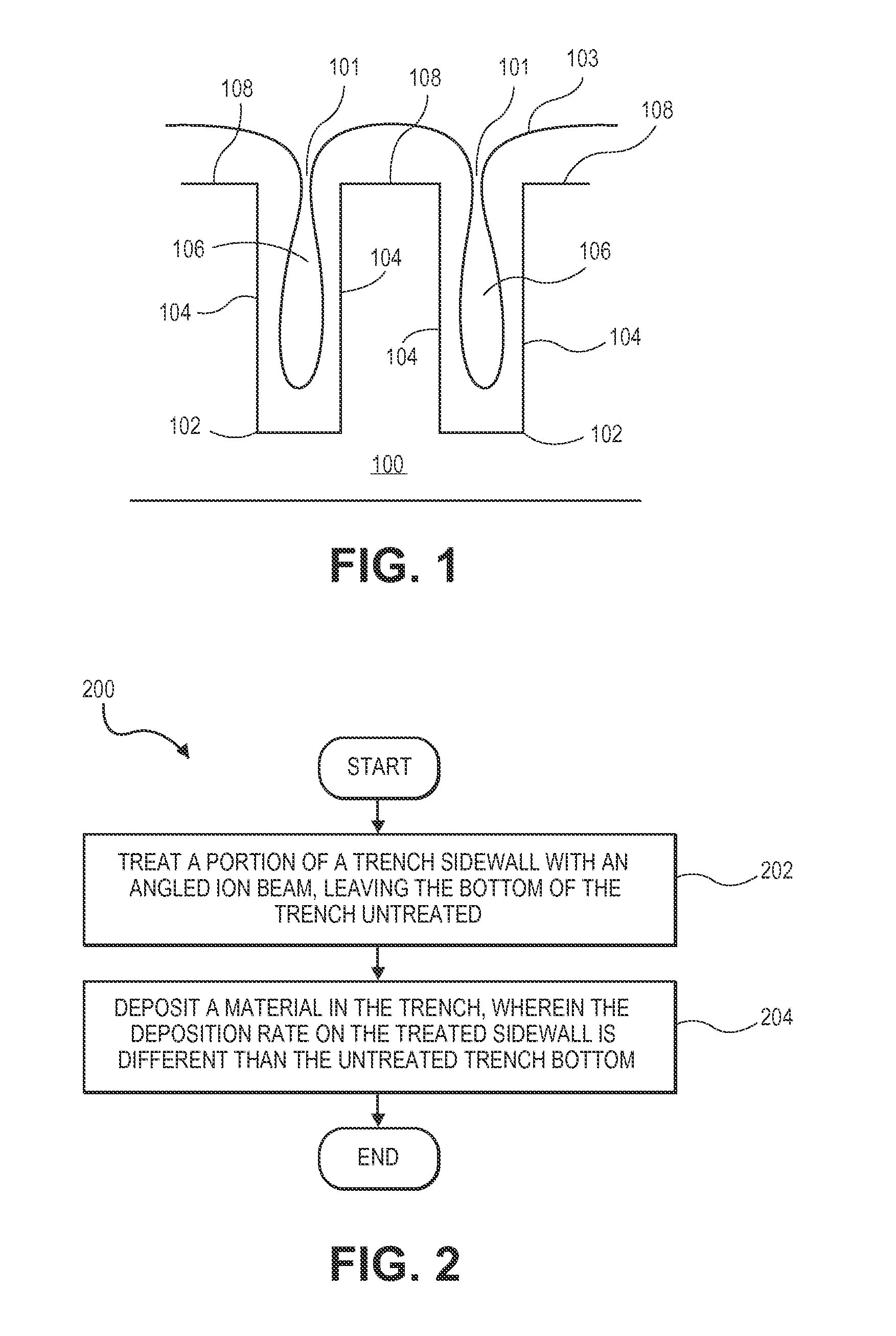Method and system for three-dimensional (3D) structure fill
a technology of structure filling and three-dimensional filling, applied in the field of three-dimensional (3d) structure filling, can solve the problems of reducing the performance and yield of the device formed, the process of filling trenches becomes more difficult, and the device performance is poor
- Summary
- Abstract
- Description
- Claims
- Application Information
AI Technical Summary
Benefits of technology
Problems solved by technology
Method used
Image
Examples
Embodiment Construction
[0024]Apparatuses, systems, and methods of three-dimensional structure fill are described. Three-dimensional structure fill can include filling trenches in a semiconductor wafer or substrate with a material, also known as gap fill. The term “trench” is used in the following description to refer to any hole or other three-dimensional structure capable of being filled in a semiconductor wafer or substrate.
[0025]Embodiments of the invention involve the use of one or more angled ion beams to treat portions of trench sidewalls to change the deposition rate of fill materials on the treated portions. A treated “portion” of a sidewall may include the entire sidewall, or less than the entire sidewall. The angled ion beams can treat part or all of the trench sidewalls without treating the trench bottom. The deposition rate of fill materials on the treated portions can be lower than the untreated bottoms, resulting in bottom-up fill without the formation of overhangs at the trench opening, or ...
PUM
| Property | Measurement | Unit |
|---|---|---|
| Fraction | aaaaa | aaaaa |
| Fraction | aaaaa | aaaaa |
| Angle | aaaaa | aaaaa |
Abstract
Description
Claims
Application Information
 Login to view more
Login to view more - R&D Engineer
- R&D Manager
- IP Professional
- Industry Leading Data Capabilities
- Powerful AI technology
- Patent DNA Extraction
Browse by: Latest US Patents, China's latest patents, Technical Efficacy Thesaurus, Application Domain, Technology Topic.
© 2024 PatSnap. All rights reserved.Legal|Privacy policy|Modern Slavery Act Transparency Statement|Sitemap



